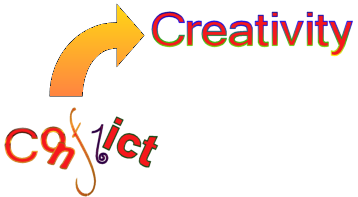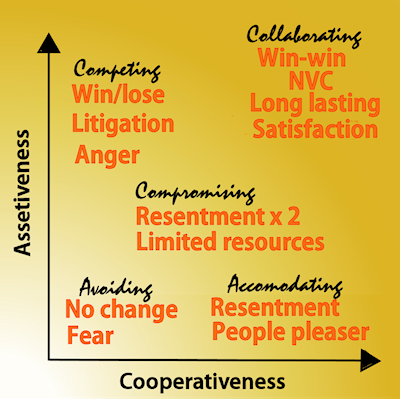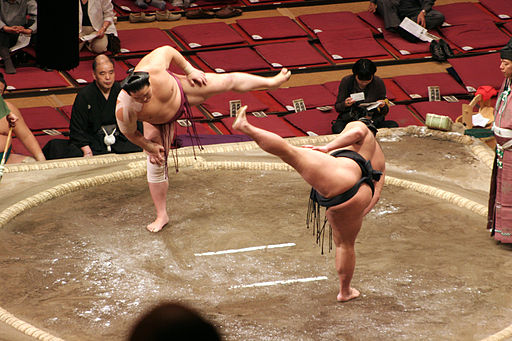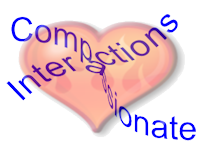About
Conflict Resolution
From the beginning it is a good idea to use effective conflict management in a way that will use the energy of conflict to create something even better. When we embrace conflict instead of avoiding it, we harness energy and put it to better use. Can you imagine life without conflict? It would be dull, things would never change. All great and wonderful inventions, ideas, works of art exist because someone thought something new would make life better.
 Use conflict productively
Use conflict productivelyRecent research into the part communication contributes in how conflict plays out shows how important it is understand how what we say, our tone of voice, our posture all influence what happens next. Almost everything I have read about conflict management says to use the Nonviolent Communication (NVC) model to deal with conflict. I don't know if the authors are aware of NVC when they say the best way to handle a conflict is to deal with emotions and interests but they are describing the NVC model.
Do you know your dominant conflict style? Here is a test you can take to determine your conflict style, Conflict Resolution Questionnaire. There are 5 recognized conflict styles. Depending on the situation you may use different styles at different times.

- Avoiding
- Accommodating
- Competing
- Compromising
- Collaborating
The image to the right shows the conflict styles and how they compare with self interest (assertiveness) and concern for other's needs (cooperation.) The more you can be in collaborating mode, the more satisfying the solution will be for all parties. Compromise seems like a way to address everyone's needs but actually leaves you with two resentful people. I do my best to be in collaborating mode when dealing with a conflict. The conflict style a person is using will not necessarily be pure and is subject to change based on circumstances. Such as when there is a perceived power shift.
What happens when we avoid conflict? There is some benefit to avoiding conflict. Maybe some temporary peace or ease at not dealing with it. The trouble with this long term, is that eventually the conflict will need to be dealt with or the problem will get bigger. Usually dealing with a small problem is easier than dealing with a big problem. Avoiders care little about the relationship or the issue. The image below is a conflict I would avoid. Unless you weigh over 300 lbs., are very strong and agile, I would recommend you don't use Sumo wrestling to solve your problems. This is a good time to use avoiding style.

Accommodating is useful when you don't have much interest in how the conflict is resolved. Accommodating is also frequently used when the other party has much more perceived power. If your boss can fire you if you don't do it her way, accommodating can be an effective way to keep your job. If your boss understands Nonviolent Communication principles she will know this is not in her best interest though. Accommodating puts the relationship as a higher priority than the result. Accommodators are very flexible.
Competing can be useful when there is not much time and you have the power advantage. If the power is about equal
then it is questionable
who will win in the short term. Even if you do win
in the short run you may end up paying later on. Competing happens when all sides see only a limited
amount of resources or possible solutions. This happens frequently in divorce where the assets are divided up. Many times in divorce, once the couple starts
listing assets and assigning values they find out there really isn't much there. Competing puts the relationship as a lower
priority than the result. Flexibility is minimal.
Compromising is frequently suggested as a away to resolve conflict. My preference is to use compromise as little as possible. Compromise can be useful as a time saver for issues that are not that important or do not have long lasting consequences. Compromise gives some importance to the relationship and some importance to the results. Compromise can be flexible or rigid.
Collaborating (also called problem solving) is the style that is most researched. This is because the goal is to find a solution that works for all parties and does not have any significant disadvantages. If you were to look at it in the short term it may seem time consuming compared to some of the other styles. However, if you look at it in the long run it is actually a significant time and resource saver. Nonviolent Communication is the best method for collaborative conflict resolution I have found. It contains all the components for what is considered important for effective conflict management.
Some characteristics of collaboration or problem solving conflict style:
- Both or all parties have invested time and energy in the solution.
- A belief by all parties involved that they have the opportunity to resolve the conflict and achieve a better solution by working together. (Power with instead of power over.)
- The parties recognize that the issue is mainly about the relationship and not the individuals separately. Since the parties create their relationship they also define the relationship. Since they are most concerned with the solution working and the relationship continuing on good terms the parties are the in the best position to decide what they want or need.
- An emphasis with finding a solution instead of accommodating the different points of view. They explore their differences and look at multiple options before coming to an agreement.
- Initially focused on the problem instead of proposing solutions before differences are explored. Then when both sides have been heard and the problems clearly identified, the solution phase can be explored.
- Both sides understand that rarely is one completely right and the other completely wrong. Each side has potential advantages and disadvantages.
- Having empathy for the other party, seeing it from his or her point of view. Knowing that the important needs of all must be addressed.
- Being able to make neutral observations about the situation. Seeing it from a place of non judgment.
- A willingness to look in the mirror about the emotions and attitudes one brings to the table before working with the other party to get to the solution phase from a healthy perspective that contributes to connection.
- An understanding of the other less effective conflict styles. (Avoiding, Accommodating, Competing, Compromising)
- Prevent face saving situations. This
face saving
can create huge blocks to conflict resolution using the other less effective styles. (Refer to # 10) - Attempt to minimize the effects of perceived power and status differences and any other preconceived notions such as stereotypes or prejudgment.
- Cognizant of the limitations of arguing to promote own position while putting down the other's position.
Collaborators value their own and other's feelings and needs. They are enmeshed in the conflict, willingly exploring the issues to reach greater understanding and check out uniting solutions. They demonstrate flexibility and are not stuck on specific strategies or positions. It doesn't mean they just give in, they are firmly committed to their goals and do not sacrifice them. Collaboration works best when the parties involved have a strong desire for an effective outcome to the conflict, strive to get their goals and needs met and are open to different ways to achieve their objectives. Collaborators are willing to be honest about what is going on for them. Collaboration requires a deep knowledge about issues and needs, being vulnerable and creating trust helps with the communication level necessary for problem solving. Collaboration encourages sharing power and control of the solution. Collaborators empower others while not losing their own power. This is where the win-win comes in.
The downside to collaboration is it can be time consuming. It make take quite bit of exchanging feelings and needs to come up with a satisfying solution. It can be manipulated by a person with more power. If it takes too long, the person with more power may decide to just use their "trump card" and resort to force, claiming they exhausted all other options. In my opinion, this is a very short-sighted way to deal with conflict. My advice, take your time, it will save time.



